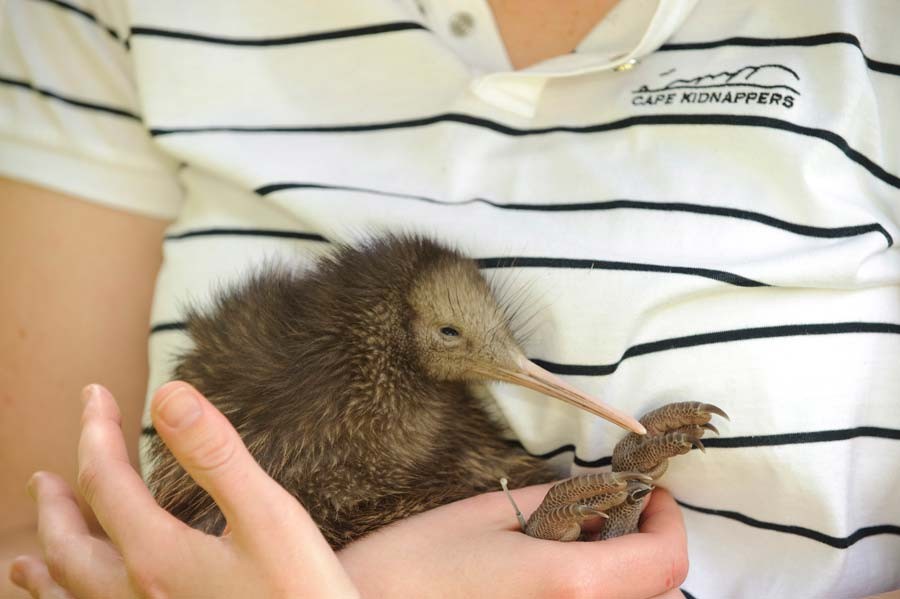The Kiwi
New Zealand has fondly adopted the kiwi bird as its national symbol, and there’s a lot to know about this weird little nocturnal bird that adorns many Kiwiana items, and is so well beloved that the people of the nation are proud to be known as “Kiwis” around the world. Don’t be confused – a “kiwi” is a bird or a New Zealander, not the fuzzy, green-fleshed fruit! In New Zealand these are known by the longer name of kiwifruit.
The kiwi is endemic to New Zealand and easily recognisable by its long beak with nostrils at the tip, tiny wings and shaggy brown feathers. Kiwis are flightless birds, and they spend their days sleeping in underground burrows. At night they sniff out worms, spiders and other insects in the undergrowth, also snacking on New Zealand fruits and plants. Kiwis lay giant eggs (the biggest in proportion to their body of any bird in the world) and the parents take it in turns to sit on the egg for 70 days until the chick hatches.
Species
There are five species of kiwi. The Brown Kiwi can be found in the North Island, while the Tokoeka lives in the southwest of the South Island and the Rowi inhabits the West Coast of the South Island. The Great Spotted Kiwi is found only in the northwest of the South Island, while the rare Little Spotted Kiwi exists only on offshore islands and in predator-free sanctuaries.
An Endangered Icon
Before humans arrived in New Zealand, the country was a predator-free paradise, and many flightless bird species evolved unmolested by carnivores. When humans introduced predators such as cats, rats and stoats, however, the kiwi population shrank drastically, and today they are a threatened species, with perhaps only around 70,000 birds remaining. New Zealand conservation workers are doing their best to protect New Zealand’s national bird through wildlife sanctuaries and breeding programmes.
Legend Has It…
A Māori legend tells the story of how the kiwi lost its wings. According to the myth, Tāne-mahuta, god of the forest, was worried about his children, the trees, as bugs and birds were eating away at them. He consulted his brother, Tāne-hokahoka, god of the birds, who asked his children to come down from the forest roof and live on the floor. But the tui was scared of the darkness on the forest floor, the pukeko didn’t like its dampness, and every bird had another excuse. Only the kiwi agreed to sacrifice his beautiful wings and feathers to live on the forest floor. As a reward, Tane-hokahoka made him the most well-known and best loved bird of all.
Meeting the kiwi
Thanks to conservation efforts, there are plenty of options for seeing kiwi forage in nocturnal houses. Some of the best places include: Whangarei Museum, Otorohanga Kiwi House and Native Bird Park, the National Aquarium of New Zealand in Napier, Wellington and Auckland zoos, ZEALANDIA in Wellington, Willowbank Wildlife Reserve and Orana Wildlife Park in Christchurch, Kiwi Birdlife Park in Queenstown, and Rainbow Springs Kiwi Wildlife Park and Kiwi Encounter in Rotorua. And if you’re lucky, you might just see a kiwi in the wild on the beaches of Stewart Island!

Photo: Cape Kidnappers